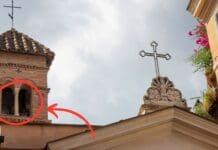An iconic sight of Rome: the sampietrini cobblestone roads. The unique pavement began in the 16th century when the Pope was nearly thrown from his carriage.
Although recorded history has been less than kind as to the origin of the famous sampietrini road, tradition tells the story that one night in 1585 Pope Sixtus V was travelling in the papal carriage through Saint Peter’s Square back to the Vatican apartments.
The rough, unmaintained roads caused wheel to rocket off, rocking the carriage with such force the pontiff was nearly thrown to the ground. He entrusted the Vatican maintenance staff or sanpietrini, little Saint Peters, with repairing the roads.
They decided to pave the road with small square basalt rocks, made from trimming larger basalt rocks that had been used to pave the roads of ancient Rome. Tradition says every stone laid around the Vatican represented a soul by Saint Peter. The stones, like the Vatican maintenance workers, became known as sampietrini – children of Saint Peter.
In 1736, Pope Clement VIII began covering every street in Rome with sampietrini. By the time of the Italian Unification in 1870, nearly every street had been covered with the stones, each individually hand cut and placed onto a bed of compressed earth.
In Rome, most of the sampietrini has been removed as modern transportation has not been kind to the traditional rock pavement, saved today only for areas of slow traffic with more pedestrians than vehicles.
Photo credit: Only Fabrizio / Shutterstock.com



















